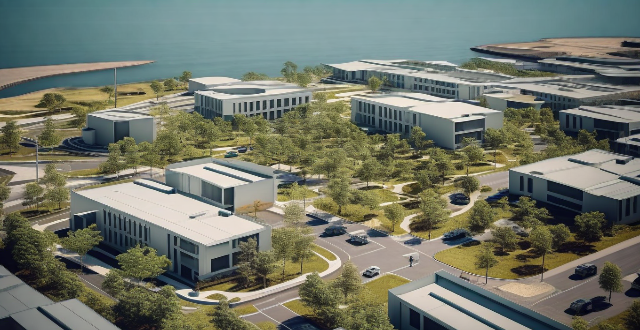Construction of large sports venues in urban areas can lead to loss of natural habitats, urban sprawl, high resource consumption, pollution, waste generation, and increased carbon emissions. To mitigate these impacts, sustainable design, landscape integration, effective waste management, transport planning, and carbon offsetting measures are crucial.

Environmental Impacts of Constructing Large Sports Venues in Urban Areas
Constructing large sports venues in urban areas can have significant environmental impacts. These impacts can be categorized into several key areas:
Land Use and Habitat Displacement
- Loss of Natural Habitats: Building large structures often requires clearing land that may include forests, wetlands, or other natural habitats. This displacement can lead to a decline in biodiversity and disrupt ecosystems.
- Urban Sprawl: As sports venues are typically built on the outskirts of cities, their construction can contribute to urban sprawl, which in turn increases traffic congestion, air pollution, and energy use associated with increased commuting distances.
Resource Consumption
- Energy and Water Use: The construction process itself demands substantial amounts of energy and water resources. Moreover, once operational, these venues often require significant energy for lighting, cooling, and heating, as well as water for maintaining grounds and facilities.
- Materials: Building materials such as steel, concrete, and glass are resource-intensive to produce and transport. Their extraction and manufacturing processes can cause significant environmental degradation.
Pollution and Waste
- Construction Pollution: Noise, dust, and emissions from construction equipment can affect local air and water quality, potentially harming nearby residents and wildlife.
- Waste Generation: Construction and demolition waste is a major issue. A lot of waste is generated during the construction phase, which if not managed properly, can end up in landfills or improperly disposed of.
Carbon Footprint
- Greenhouse Gas Emissions: The entire lifecycle of a sports venue, from construction to demolition, contributes to carbon emissions. These include emissions from the production of building materials, transportation of supplies, and ongoing operations.
Transportation Impacts
- Increased Traffic: Sports venues draw large crowds for events, leading to increased traffic congestion, greater demand for parking spaces, and more vehicle emissions.
- Public Transit Strain: While some venues encourage the use of public transportation, others may not be easily accessible by public transit, putting additional strain on already overwhelmed systems.
Mitigating Measures
To mitigate these environmental impacts, several strategies can be employed:
- Sustainable Design: Incorporate green design elements like solar panels, water recycling systems, and energy-efficient technologies.
- Landscape Integrated Design: Minimize habitat loss by integrating the structure with the existing landscape and using native plant species.
- Waste Management: Implement effective waste management plans to reduce, reuse, and recycle construction materials.
- Transport Planning: Encourage the use of mass transit and provide ample bicycle parking to reduce the number of cars at events.
- Carbon Offsetting: Offset the carbon emissions associated with the venue's construction and operation through investments in renewable energy projects or reforestation efforts.
In conclusion, while constructing large sports venues in urban areas presents various environmental challenges, implementing sustainable practices and planning strategies can significantly reduce their ecological footprint.